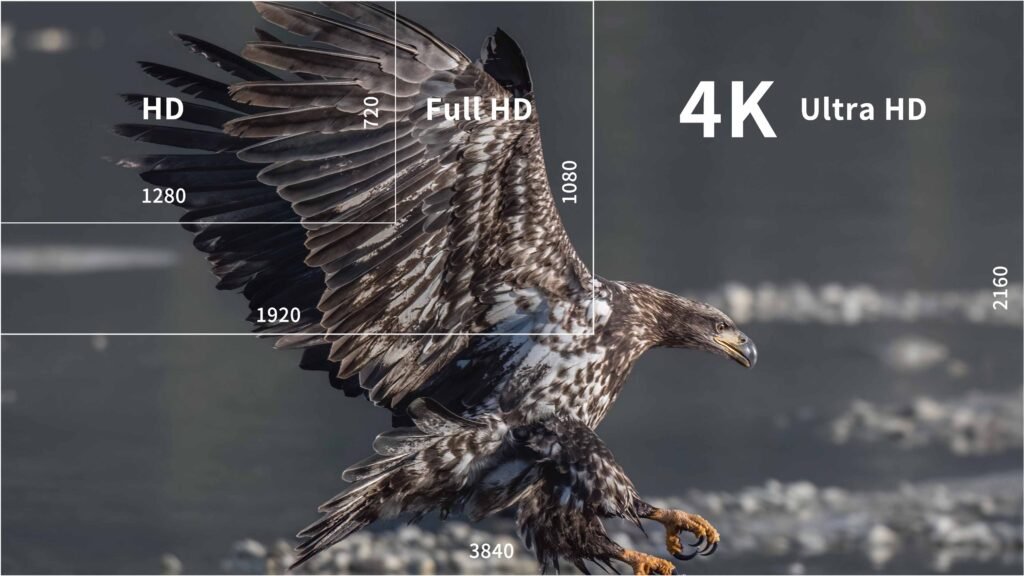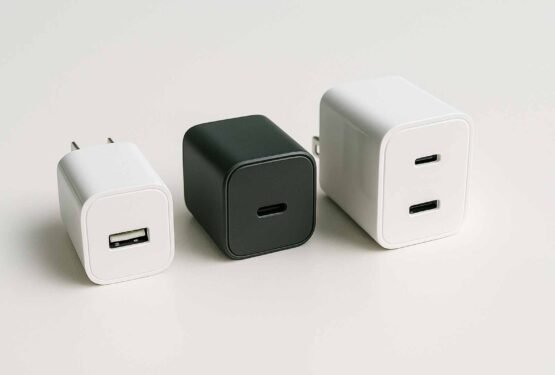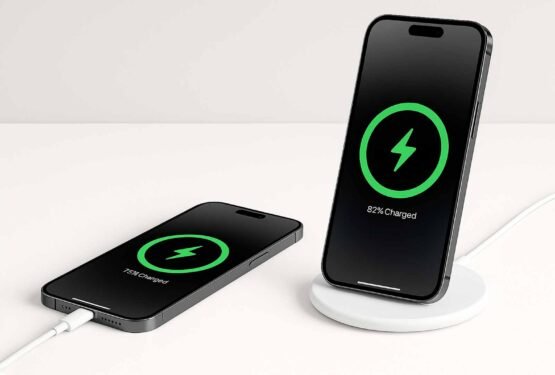
電視解析度方面被認為是“最先進”的技術明天很容易就會過時。在過去幾年中,解析度標準迅速提高!從高清到下一代超高清,然後被 4K 取代,再到全新的 8K,後者已經蓄勢待發,準備接管。這些縮寫有時會引起混淆, Full HD 、 4K UHD 之間有什麼 差別 呢?

高清 HD
高清(HD)是現今最基本的影像解析度規格之一。它分為兩種主要的解析度:
- 720p:這是高清的最低標準。解析度為 1280 x 720,這意味著螢幕上有 1280 個水平像素和 720 個垂直像素。這種解析度在 16:9 的寬高比下呈現,主要應用於較小尺寸的螢幕或數位廣播電視。
- 1080p:又稱為 Full HD,這是高清的最高標準。解析度為 1920 x 1080,在 16:9 的寬高比下呈現。這種解析度是目前最常見的格式之一,被廣泛應用於電視、監視器和電腦螢幕。
全高清 Full HD
全高清或全高清是目前大多數電視、藍光播放器和影片內容的解析度。它是 1920 x 1080 像素。圖片寬 1920 像素,高 1080 像素(2.07 兆像素)。全高清也稱為 1080i 和 1080p。
通常指的是介於高清和 4K UHD 之間的解析度。這個解析度並沒有正式的標準規格,但它通常指的是高於 1080p(Full HD)但低於 4K UHD 的解析度。
- 1440p(QHD):解析度為 2560 x 1440,也稱為 2K 或 WQHD(寬度達到高清級別)。這個解析度在電腦螢幕中越來越常見,特別是在遊戲和設計應用中。它提供了比 1080p 更高的細節和清晰度,但低於 4K。
4K 超高清 UHD
超高清也稱為 UHD,在電視、媒體播放器和影片內容中越來越受歡迎。圖片解析度為 3840 x 2160(8.3 兆像素)。具有超高清解析度的電視顯示的像素是全高清圖片的 4 倍。
- 4K UHD:4K UHD 代表的是「四倍高清」的意思。解析度為 3840 x 2160,在 16:9 的寬高比下呈現。這種規格在電子產品、電視和電影製作中越來越流行。它能提供比 Full HD 更細緻的影像品質,使觀看者能看到更多細節。
- 實際應用:4K UHD 的應用範圍廣泛,包括電視、電影、遊戲和攝影等領域。4K UHD 可以提供更好的觀看體驗,但也需要相應的設備和內容來支援。
各種螢幕解析度 差別
各種螢幕解析度之間的差異如下表所示:
- 高清:720p 圖像解析度(1,280 x 720 像素 – 總共約 100 萬張)
- 全高清 (FHD):1080p 圖像解析度(1,920 x 1,080 像素 – 總共約 200 萬像素)
- Quad HD (QHD):1440p 圖像解析度(2,560 x 1,440 像素 – 總共約 400 萬像素)
- 超高清 (UHD)/4K:2160p 圖像解析度(3,840 x 2,160 像素 – 總計約 800 萬像素)
圖像中的像素越多越好。有了更多的像素,圖像就可以以更大的尺寸顯示,而不會出現畫面質量下降的情況。因此,具有全高清/1080p 圖像解析度的 14 英寸筆記型電腦顯示器將比具有高清/720p 圖像解析度的 14 吋顯示器更清晰。

總結
這三種解析度規格(高清、超高清 Full HD 和 4K UHD)各自適用於不同的情況和需求:
- 高清:適合較小的螢幕和一般的觀看需求,是現代電視和數位廣播的基本標準。
- 超高清 Full HD:在現今的電腦螢幕和高品質的影像需求中變得越來越流行,尤其是在遊戲和設計領域。
- 4K UHD:提供最好的畫質和細節,在大型螢幕和高品質的影音內容中表現出色。它是當前高解析度影像的主流選擇,但需要與相應的設備和內容匹配才能發揮最佳效果。
總之,不同的解析度規格代表著不同的畫質和細節水平,使用者可以根據自己的需求和設備選擇適合的解析度來獲得最佳的觀看體驗。
閱讀相關文章: 將 Netflix 投影 至 4K 大螢幕觀看,只要一條線?
閱讀相關文章: 不用買電視盒! 也能在 電視 播放 4K Disney+
推薦文章
Correct resolution configuration
The image resolution is usually indicated by the number of horizontal and vertical pixels, i.e. the total number of pixels on a screen. HD Ready, for example, means that the resolution is at 1280 pixels on the horizontal axis and 720 pixels on the vertical axis. Pixels are the building blocks of an image. They have corresponding colour values that create the overall image like a mosaic.
It should be noted that pixel specification alone cannot fully indicate how sharp the image on the screen actually appears to the human eye. Rather, the resolution is relative to the size of the screen, due to the density of pixels in any given image. The pixel density is specified in the unit DPI (Dots per Inch). Full HD has a significantly greater pixel density on a 32-inch screen as opposed to a 40-inch screen, and therefore produces a finer-quality image on a smaller screen.
4K and UHD in brief
- ➨ UHD: This abbreviation stands for Ultra High Definition, and is the successor to Full HD. The resolution of UHD is 3840 x 2160 pixels (8,294,400 pixels overall), which is four times higher than that of its predecessor.
- ➨ 4K: The term originates from cinematic terminology, and, whilst not strictly correct nowadays, is still used for TV. 4K refers to a horizontal resolution of 4096 Pixels (4K = 4000). The number of vertically-arranged pixels is 2160 (2K) for television sets. Therefore, we sometimes use the term 4K2K. Strictly speaking, a UHD television cannot achieve the same resolution as a 4K set, since there are fewer horizontal pixels. In reality however, both terms are used pretty much interchangeably. This is why many television sets “only” have a resolution of 3840 x 2169 pixels, even though they are labelled as 4K devices.




